WorldAnimalFoundation.org is reader-supported. When you buy through links on our site, we may earn an affiliate commission. Learn More
Name a spaniel breed of dog… Did you say the cocker spaniel? You’d be correct, but could you name any other spaniel breeds? There are many. The American Kennel Club lists 15, to be exact.
These Sporting-classified dogs have their job requirements down pat. Their intelligence is off the charts, and they’ve been the co-workers and companions of hunters for centuries. Spaniels are as personable as they are active and bring lots of energy to the party.
Experts at finding, flushing, and fetching game, spaniel breeds are highly trainable and just as eager to please their guardian(s). So, let’s get into specifics about these unique dogs. The bonus?… They’re just as cute as they are smart!
Characteristics of Spaniel breeds
No matter their color or unique personality traits, there are some things these animals have in common:
- Affectionate
- Active
- Gentle
- Loving
- Athletic
- Energetic
- Fun
- Easy-going
- Devoted
- Medium-sized
- Independent
It’s time to jump in and find out what makes Spaniel breeds so special.
Spaniel Dog Breeds
Let’s step into the world of Spaniels, where every wagging tail tells a tale of charm, companionship, and boundless energy. These beauties take “energy” to a whole new level, so buckle up to jump into the world of popular spaniel breeds.
1. American Water Spaniel
This breed has tenacity and energy – They can hunt all day. Once they pick up on the game being hunted, they’re off and running and thoroughly enjoy their job. Working patiently and methodically, they’re certainly not as popular as other Spaniel breeds but can perform alongside the best of them.
Although a bit stubborn when training comes into the picture, these dogs respond well to an alpha human leader – one who knows how to take control and patiently guides and trains them.
Popular show dogs; Water Spaniels seamlessly go from sport to show easily. (That curly chocolate-brown hair makes you go “Ooh.”) Their medium size makes them perfect for retrieving from boats, and they’re the first sporting dog developed in America just for that purpose.
2. American Cocker Spaniel
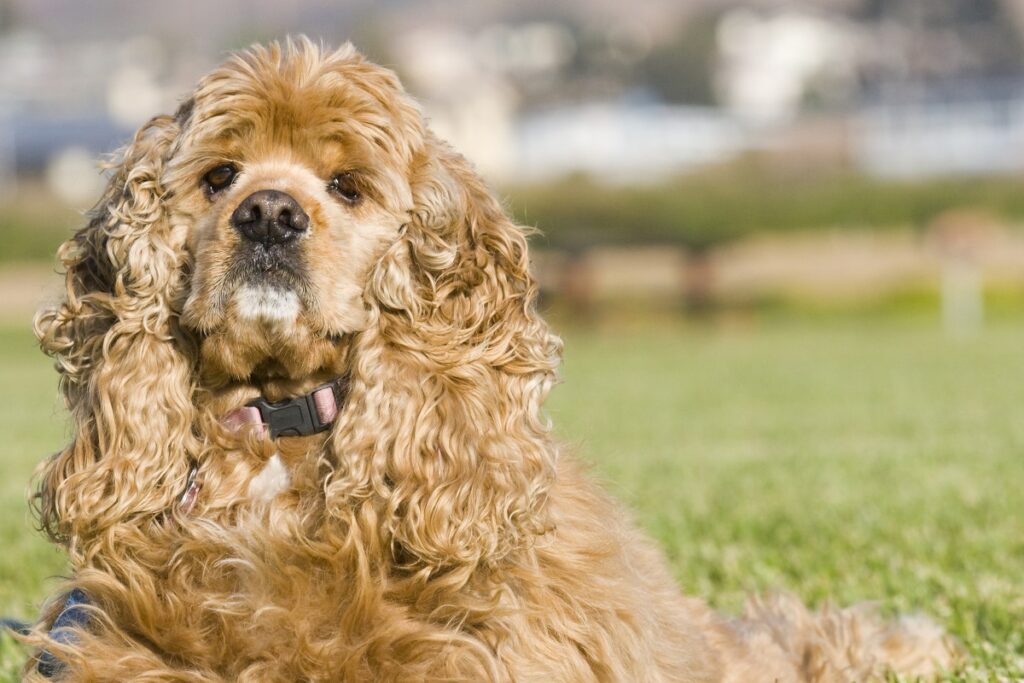
What dog person doesn’t know those eyes, that hair, that friendly disposition? In 1940, the English and Canadian kennel clubs registered this dog as separate breeds: American and English (British), with the English being taller and the American just a bit smaller. The AKC joined them in 1946, and two breeds were born.
The English also seems to have a higher prey drive and more energy than the American.
Both versions wow in dog shows and also excel at:
- Fieldwork/hunting
- Obedience
- Agility
- Scent work
- Therapy
And do you remember Lady from “Lady and the Tramp,” the Disney animated movie?” Yep, she was the unforgettable cocker Spaniel who co-starred alongside “Tramp” (a lively mixed breed).
3. Cavalier King Charles Spaniel
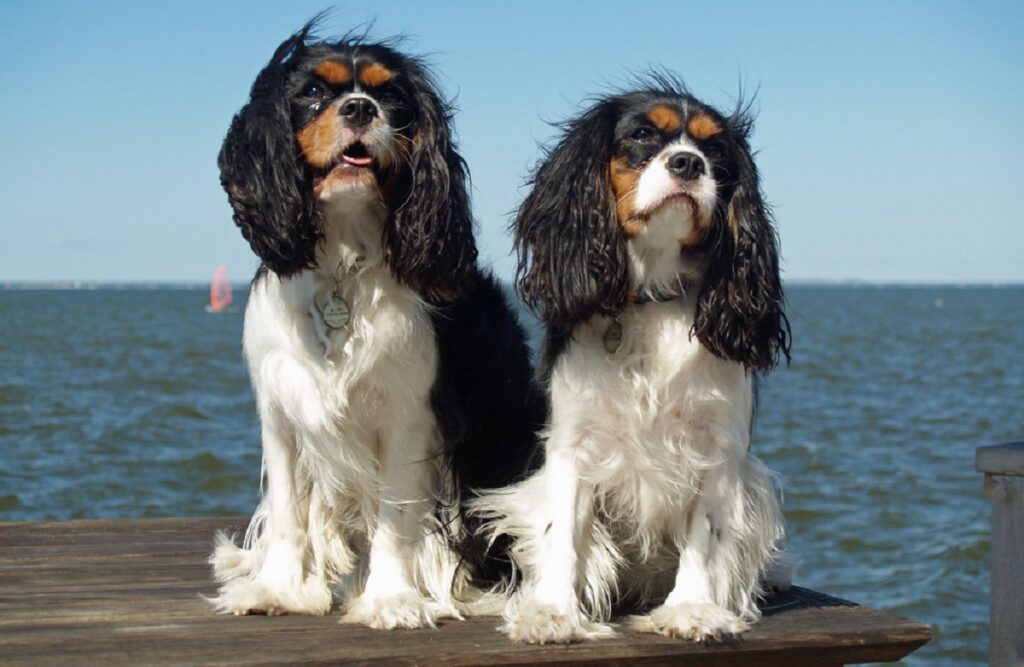
You’d think this breed were actual Kings the way guardians are so completely loyal to them. (They indeed got their name in the 17th century from British royalty.) It’s not unusual to see generation after generation in one household.
Classified by the AKC in the Toy group in 1996 as the 140th recognized breed, Cavalier King Charles spaniels are hunting and sporting dogs and have the history to prove it. They don’t come cheap; puppies are $1,000-$2,500, so you may want to adopt from a breed-specific rescue or even a shelter. CKCs have been prominently featured in Rembrandt’s and Van Dyck’s paintings.
Excellent therapy dogs, their gentle and amicable natures are apparent at their finest. Although they’re great with young children and other dogs, they may need to be socialized first with a family cat and could chase (or worse) other small pets.
4. Boykin Spaniel
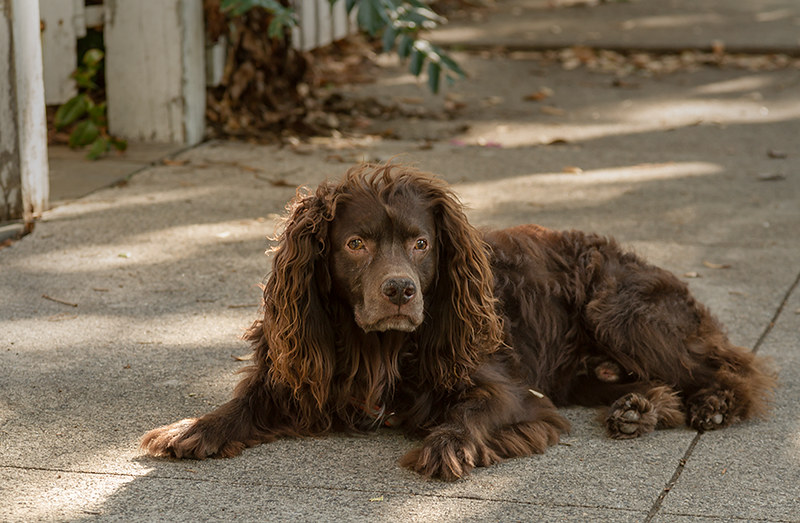
Originating from South Carolina (it’s their state dog) US, this breed’s club was established in 1977 – The Boykin Spaniel Society (BSS). This waterfowl retriever and land gamebird hunter can include turkeys on his list of prey. Not much of a watchdog; they’re far too friendly, the Boykin Spaniel is affectionate and highly active.
They’re the perfect size for a boat that’s on the hunt and are ideal waterfowlers since retrieving comes naturally to them. Unfortunately, although this breed sits perfectly still after flushing out prey, their excitement over the hunt made them wag their tails, so tail docking began with the breed and continues today.
There has been some disagreement between the hunting community and the AKC with breeding for beauty or breeding for hunting, with the hunting community fearing their beloved dog’s talent for hunting could be overlooked.
5. Clumber Spaniel
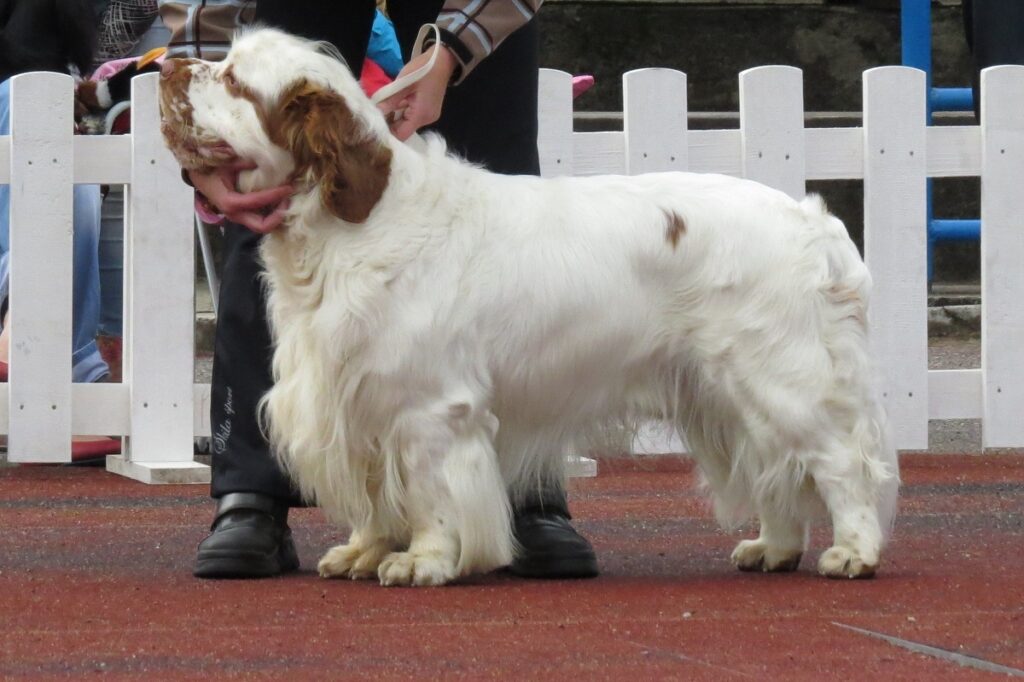
This powerful bird dog is the largest of the AKC’s flushing spaniels. With bodies that are built to push through thick vegetation in the field, these dogs are no pushovers.
There is some mystery to their early history, but we do know that in the late 1700s in Nottinghamshire, England, recorded activities began.
It was during this time that the Duke of Newcastle and his gamekeeper developed this spaniel and named it after the duke’s estate, Clumber Park. The many gamebird hunters in the surrounding area clamored over the Clumber, and a star was born.
Ever since the Duke of Newcastle’s discovery, British royals, including Edward VII and George V, have been enamored with Clumber Spaniels.
6. Brittany
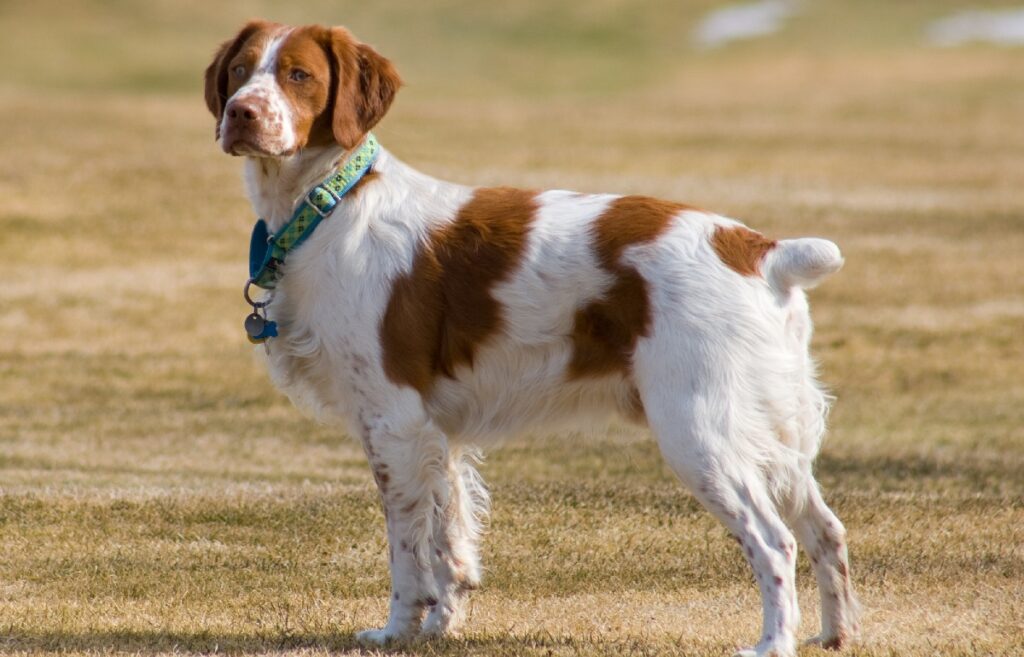
These liver and gorgeous white animals have been spotted in paintings as far back as the 17th century. The breed is unique since it only points to, not flushes out, his game.
Brittanys are sensitive dogs and adore being with their human family members. Intelligent, obedient, and agile, these spaniels make excellent companion animals. Their need for exercise matches their need for mental stimulation, so having a job to do is in this dog’s best interest.
Developed in France to be a medium-sized gun dog and household mate, the name “Brittany” was taken from the region where the dog originated in France.
They’re smaller than setters and pointers but large enough – 30 to 40 lbs. – to cover a lot of ground as a hunter. In colors of liver and white with some ticking (flecks/spots of color), they’re absolutely beautiful dogs.
7. English Cocker Spaniel
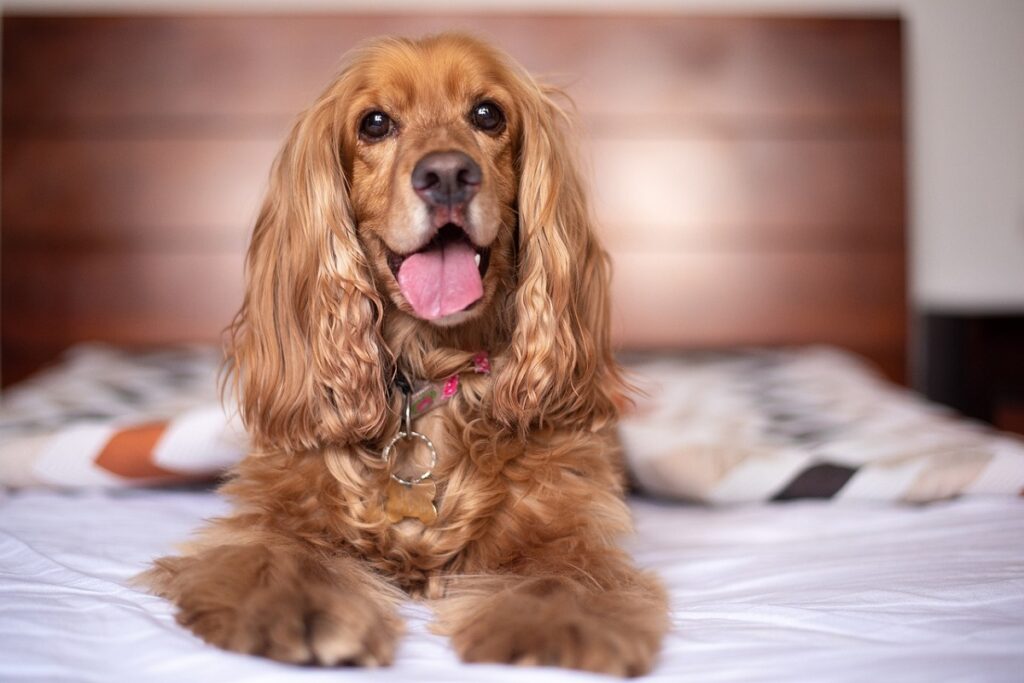
We discussed this breed a bit above, but in addition:
The name “Cocker” comes from their ability to hunt woodcocks/birds. This breed was developed to hunt small feathered game. They’re super smart and highly trainable and excel at obedience, tracking, and agility. Also known for their scent work, English Cockers are still used for bird hunting and retrieving today.
These energetic, easy-to-be-around dogs are especially affectionate and are gentle with even young children (but, as with any dog, should always be supervised during interaction with them). Cocker spaniels are family dogs who will need early socialization in order to live in peace with other animals in the home.
The English Cocker Spaniel is balanced in temperament, movement, and build and is famous for his ability to flush and retrieve game. In the AKC, ‘sporting dogs’ are also considered gun dogs or bird dogs. They’re subdivided by function – in which manner they hunt. These divisions are:
- Spaniels
- Setters
- Retrievers
- Pointers
- European utility
Spaniels are considered to be the oldest breed.
8. English Springer Spaniel
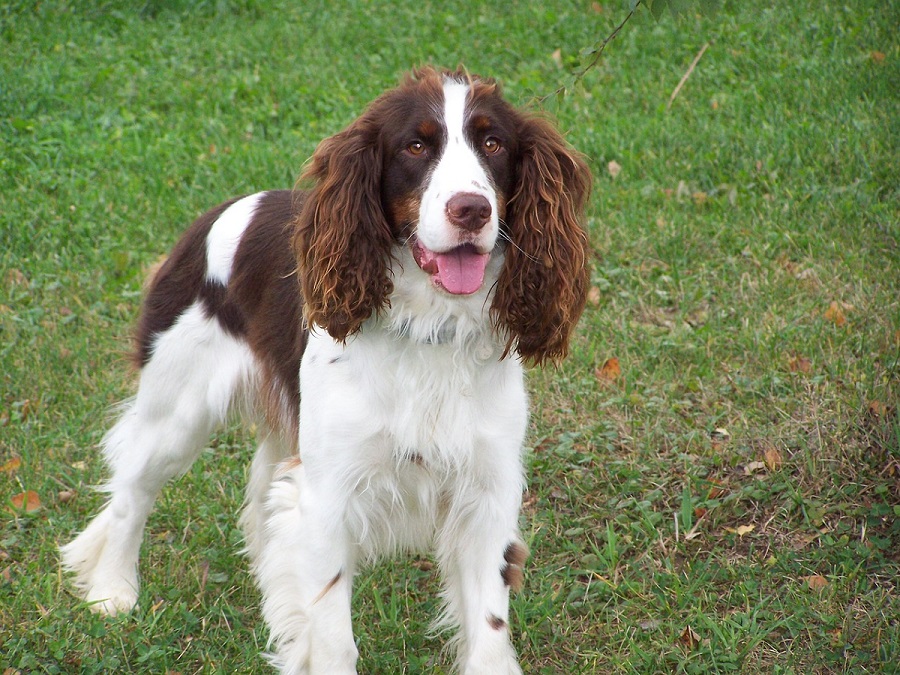
This breed with an adorable face is cheerful, loyal, and active, which makes for the perfect companion animal. In the early 1800s, the ESS was developed in England to be a flushing and retrieving gun dog.
Springer Spaniels excel at sports like flyball, dock diving, and agility. If you’re an active person with a penchant for dogs with an unforgettable face, this breed is for you. They love the water, so a dip in the pool or lake would be a favorite activity for them. They’re also eager-to-please and sharp as a tack, so training with positive reinforcement will be received well.
They’re especially good at:
- Tracking
- Retrieving
- Showing
- Agility
- Rally – When dogs and handlers work together to perform a variety of skills/behaviors such as sit, down, or stay. The course consists of 10-20 signs to follow.
9. Irish Water Spaniel
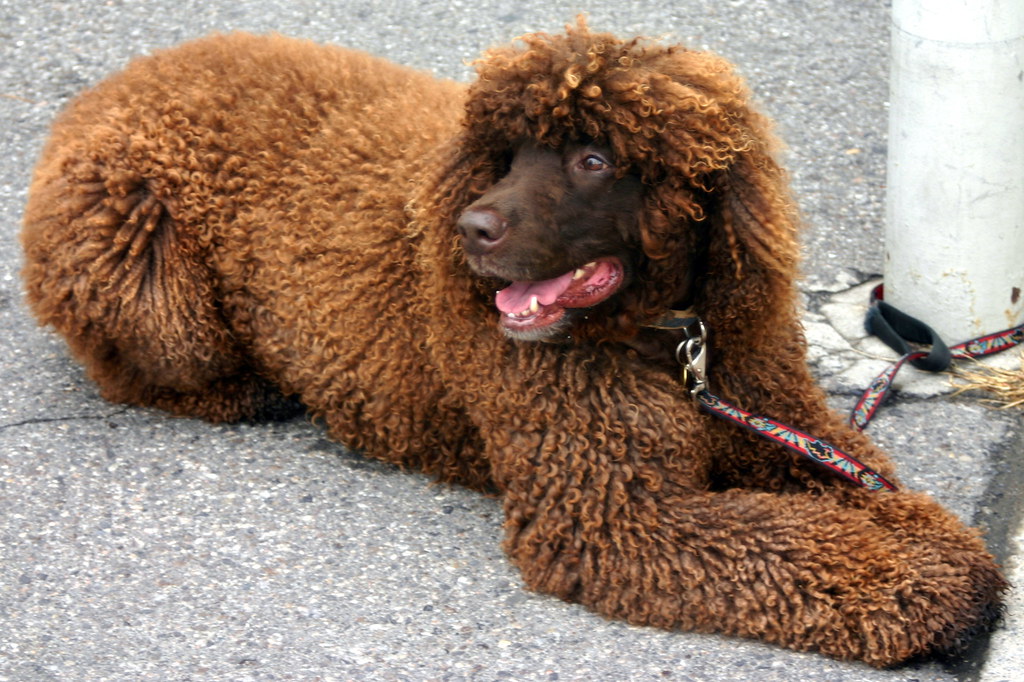
This devoted hunting dog is mainly a water retriever. (Those webbed toes need to be used for something.) The poodle-ish-looking beauty is fun, smart, curious, and a hard worker.
Queen Elizabeth I’s spymaster, Sir Robert Cecil, gifted a “smooth-tailed spaniel” to the King of France in 1598. The Irish water spaniel wasn’t born yesterday, yet we don’t know quite how far back his history goes. The AKC recognized the breed in 1884.
This dog has excellent eyesight and retrieves well in water and on land. Not a common dog, the hunter, pointer, and retriever is famous for his swimming skills. He not only excels at hunting waterfowl but also pheasant, grouse, and quail.
The Irish Water Spaniel Club (IWSC) is the breed’s headquarters for things like adoption, promoting the breed, and maintaining their health. They participate in the Canine Health Information Center (CHIC), which researches and maintains information pertaining to specific breeds.
10. English Toy Spaniel
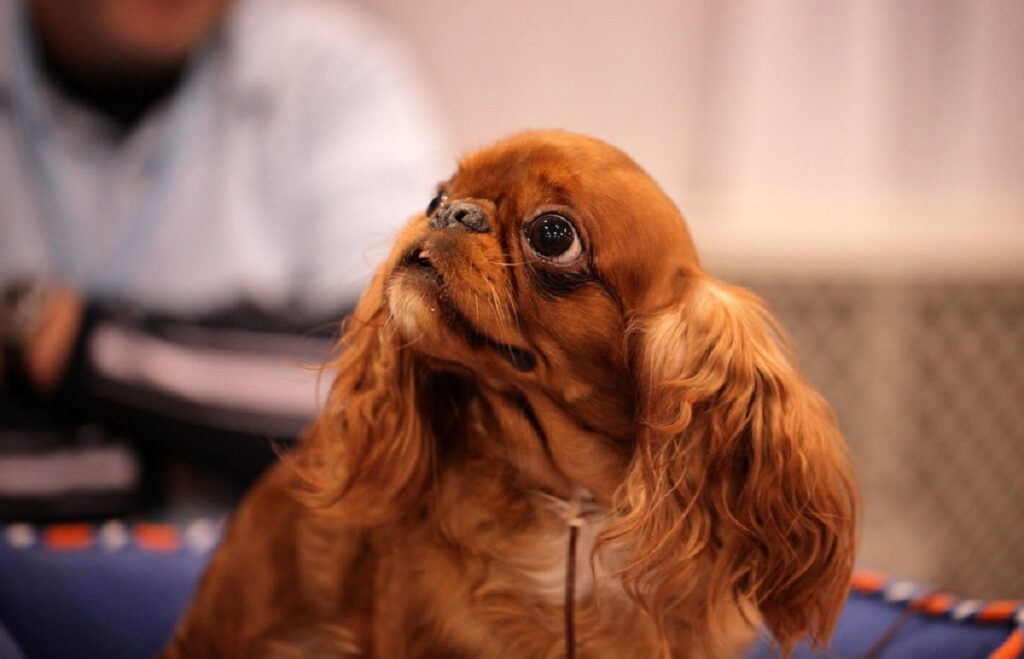
The ETS is good with everything and everyone – adults, seniors, children, and other animals… if properly socialized from a young age. This little guy weighs no more than 14 lbs. so proper care should be taken to teach young children and other animals how to gently treat them. The breed is playful and energetic when outdoors but knows how to relax inside.
As a flat-nosed breed or Brachycephalic (airways can be restricted), they don’t “do” hot weather, so they need an air-conditioned environment. The “Charlie,” as some call him, is affectionate and intelligent and still has the innate desire to hunt.
The nobles of Renaissance England wanted toy-sized versions of their favorite sporting breeds. We can trace English Toy spaniels all the way back to the 1500s when Mary Queen of Scots arrived with one at her beheading, but it is believed by historians that the ETS’s origins were in Japan.
11. Papillon
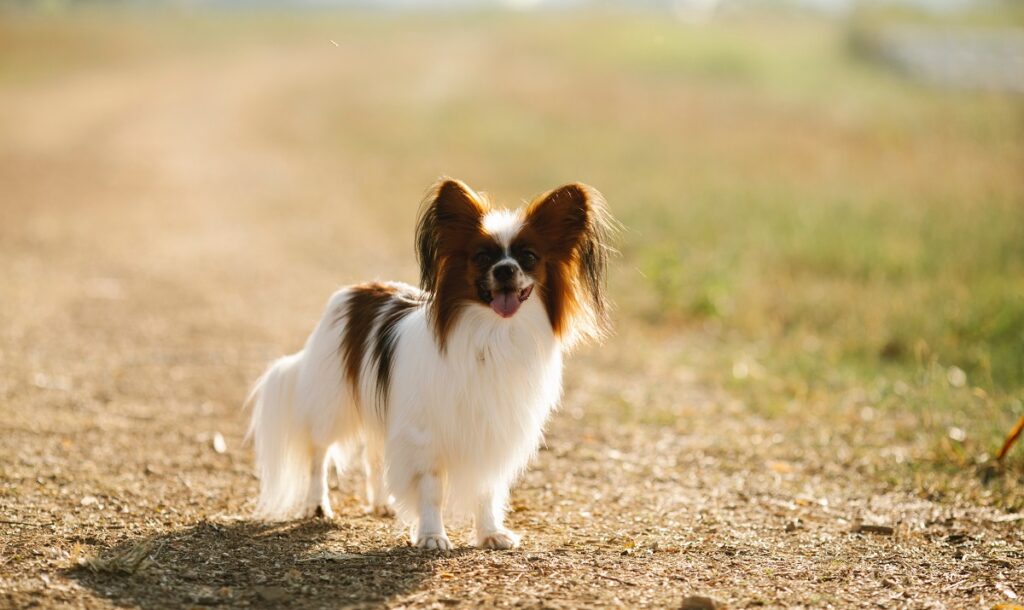
Only 5-10 lbs, this butterfly-eared breed (papillon means “butterfly” in French) may be the biggest surprise on this list. Their counterparts with ears that hang down are called phalene or moth. With a plumed tail and a long silky coat, these dogs are stunning.
Some form of this breed has been around since the 13th century, but papillons with erect ears didn’t make their appearance until the late 1800s.
Papillons were originally bred to be companions (or “lapdogs”) for noblewomen and those in Europe’s royal courts. King Louis XIV and Marie Antoinette both had papillons. Also known as Continental Toy Spaniel dogs, these canines were brought to the US during the late 19th century.
Excellent agility dogs; they have a lot of energy and enjoy being in a family that has the same drive. True to their bloodline of sporting spaniels, these small dogs have an innate desire to hunt and will chase small animals like chipmunks or mice.
12. Sussex Spaniel
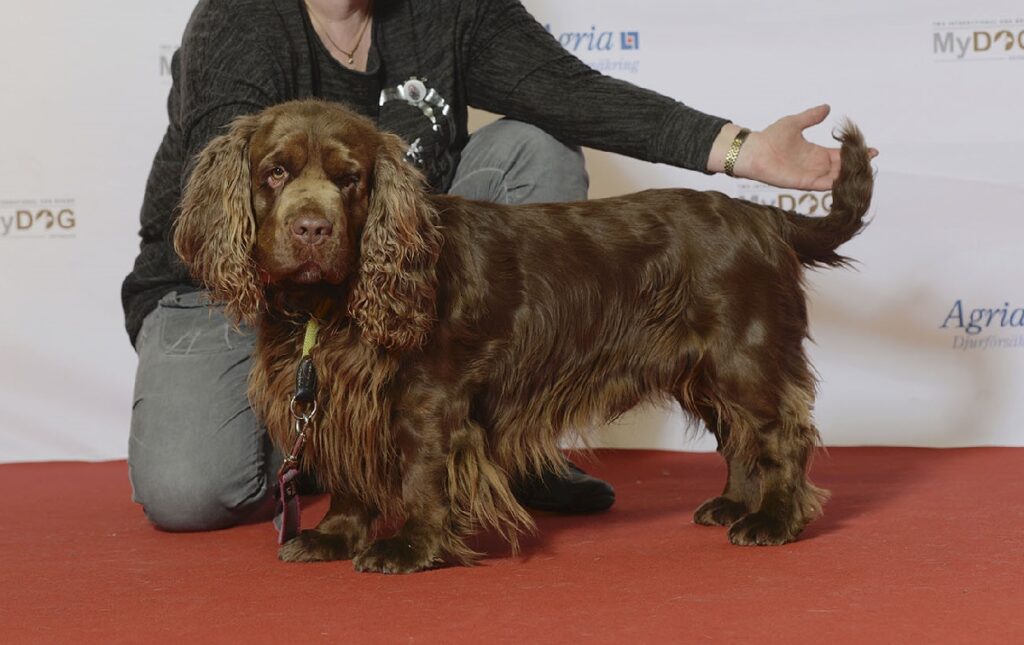
This breed originated in Sussex in the 18th century in southern England. The Sussex Spaniel Association was created in 1924 to protect the breed. Although their numbers were up for a time, they dwindled during WWII.
In 2004, they were considered to be a vulnerable British breed, and in 2016, there were only about 50 of these dogs registered with the Kennel Club (the UK’s largest organization devoted to the welfare of dogs). In 2009, the breed took home Best In Show at the Westminster Kennel Club dog show.
Although they’re considered to be bird dogs, they make excellent show dogs and are also wonderful with children. They’re cheerful and loving and will let everyone know how they feel by barking if they’re excited or surprised. They do move slower than most other gun dogs.
13. Field Spaniel
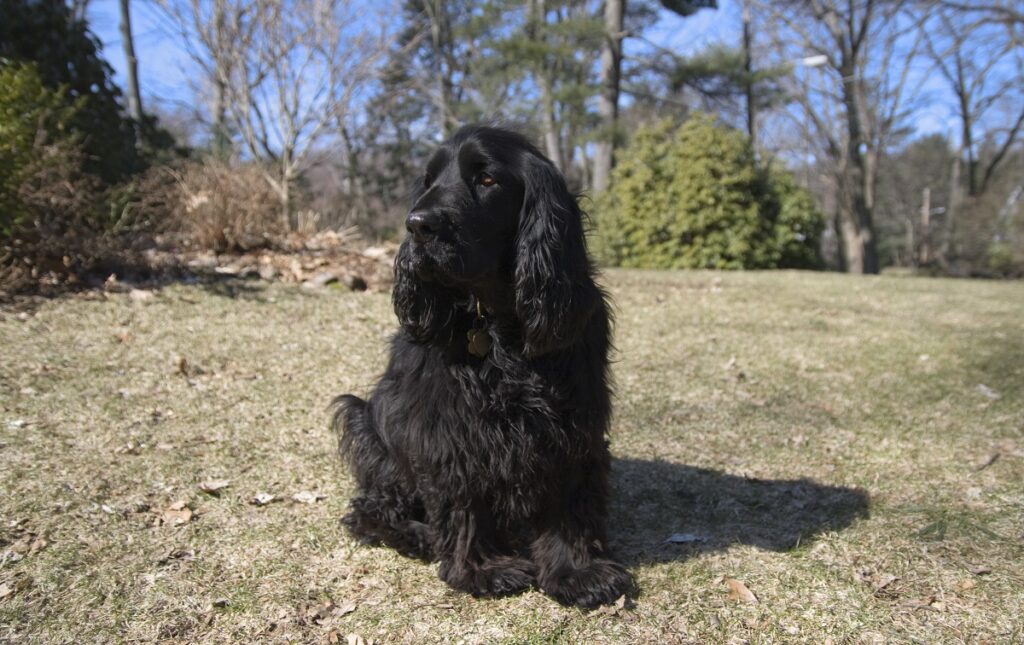
Field Spaniels bear an uncanny resemblance to Cocker, English Springer, and Sussex Spaniels for good reason – That’s how they were bred. But early on, they became favorites as show dogs as well as efficient hunters.
It was their success in the ring that had breeders rethinking things and so began exaggerating their stature (lower to the ground and longer in shape), which almost became their undoing.
Soon, the Field Spaniel‘s work as a gun dog suffered, and they began developing health issues. The breed almost became extinct. (Note: Always research to find a reputable breeder to ensure good practices and moral ethics.)
But in the 20th century, lovers of the dog strove to turn things around and re-introduced Cocker and Springer Spaniels’ blood, which gave them the “facelift” they needed to get back to better days.
The US Breed Standard calls them “unusually docile,” and so they make the perfect family companion. They don’t just sit around though, and need regular outdoor exercise as well as mental stimulation.
14. Kooikerhondje (Kooiker)
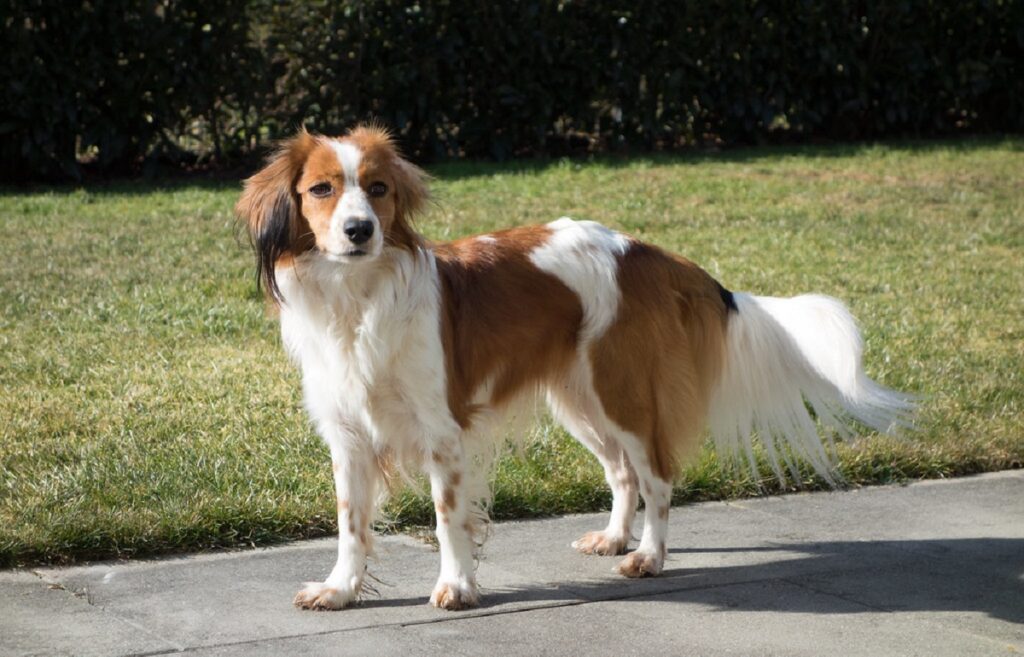
This gorgeous dog breed has a name only a mother could love. Originating in the Netherlands, “kooi” were water traps for ducks, and “kooikers” were the men who operated the traps.
These orange and white dogs were bred quite specifically for their jobs to be:
- Energetic
- Intelligent
- Hard-working
- Quiet
- Responsive
- Independent
- Great vermin hunters
Easy-going and friendly, they’re charmers to have as family members.
15. Tibetan Spaniel
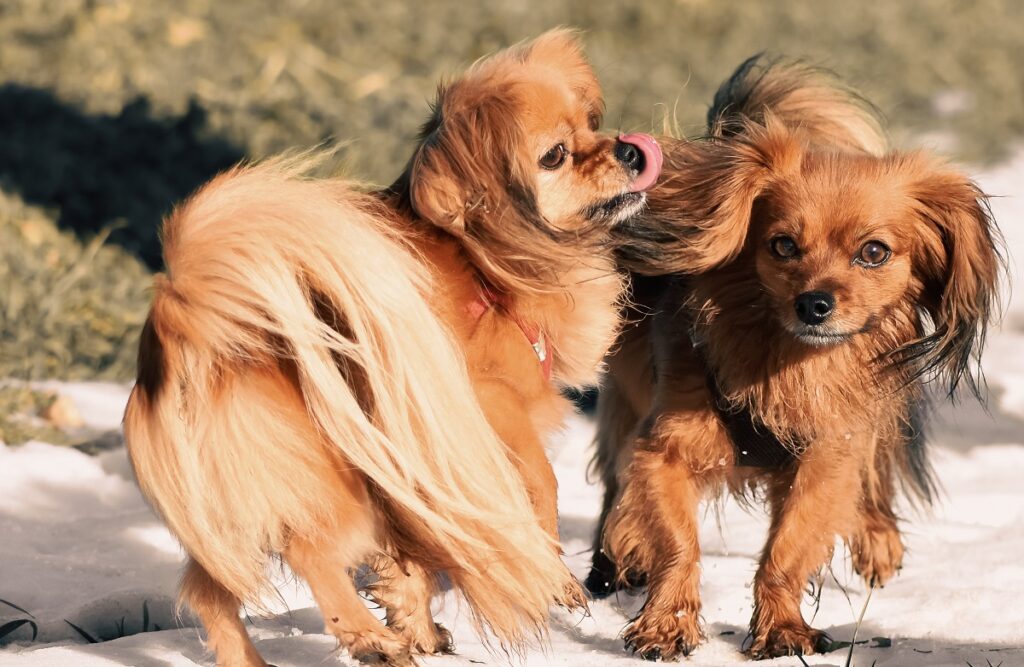
This 9-15 lb. firecracker thinks he’s bigger than he is. Their fans call them “Tibbies,” and they’re a non-sporting breed from Tibet. They’re social dogs and love being around family but can be reserved towards newcomers. Bred to be watchdogs of Tibetan monasteries, they’re barkers and will warn you of anything unusual.
Even though they’re small, they need an hour a day of exercise and some stimulating puzzle toys to keep their minds in shape. Since they’re agile and alert, they also enjoy dog sports like rally, obedience, and scent work.
16. Welsh Springer Spaniel
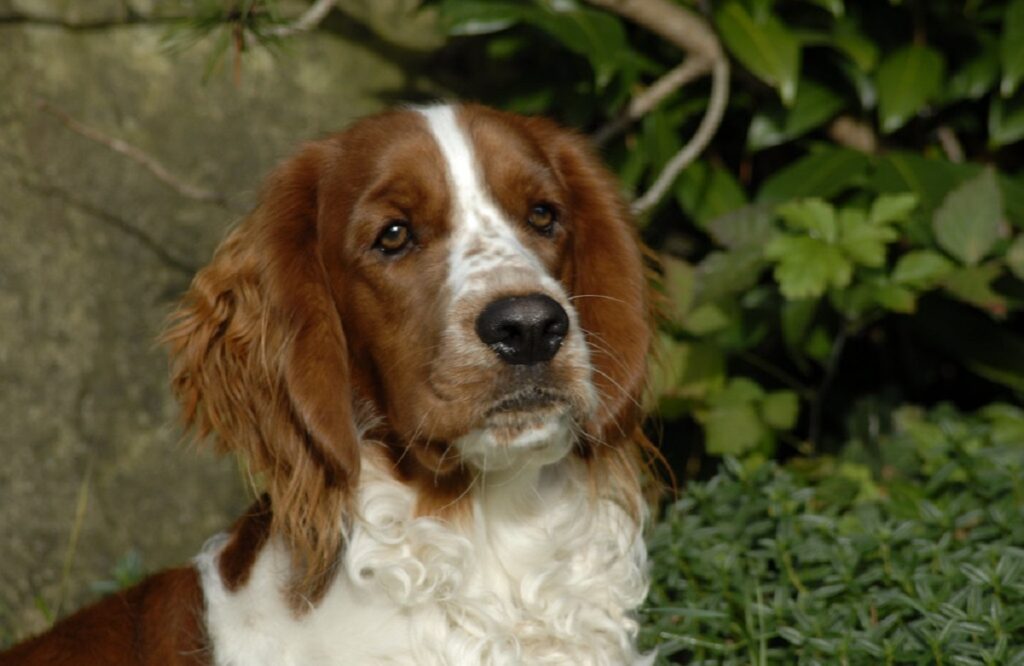
In 1902, after winning early field trials, the Welsh Springer spaniel became popular. These hard workers are gun dogs and descend from red and white Spaniels. Their coloring is spectacular. Affectionate and cheerful, they are high-energy and need hikes or double walks to get enough exercise per day.
They’re also cheerful and sensitive, great with children and other family pets, but can be standoffish with strangers. They’ve been called velcro dogs because of their loving nature.
17. Russian Spaniel
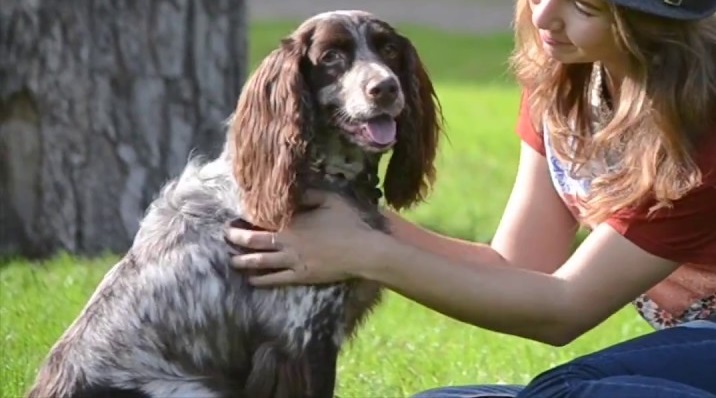
The Russian Spaniel is a combination of the English Springer Spaniel, the English Cocker Spaniel, and a variety of other spaniel breeds. In the 1900s, in Russia, gun dogs existed, but a dog was needed with longer limbs for more agile navigation.
This breed excels at scent work and endurance and is naturally drawn to flushing and retrieving.
They have, however, tried to keep these dogs affectionate and obedient to also be the wonderful companions they are.
Important Insight of Spaniel Breeds
Let’s dive deep into different types of Spaniels, where each dog offers a unique blend of breed characteristics, and see what makes them so unique!
True spaniels
Working spaniels are “workhorses.” They’re quick, affectionate, intelligent, and courageous. Never one to give up or back down, they will endure on the hunt (or on your living room floor) as long as you bid them to. Sometimes stubborn but never mean, they will win your heart and be forever devoted.
Most spaniels are medium-sized with a wide muzzle, drooping ears, and curly or silky coats. They flourish in active lifestyles and wouldn’t live their best lives in a sedentary family environment. Their coloring can be liver and white, red and white, black and white, or mostly solid browns and blacks.
Breeds to Avoid That Aren’t True Spaniels
Looking to welcome a true spaniel into your home? Awesome. But here are some things to keep in mind before adopting or buying:
- Not every breed with “spaniel” in their name is a spaniel. For example, Brittanys share more in common with pointers than spaniels, so the AKC dropped “spaniel” from its name in 1982. The physical similarities between Brittanys and spaniels are why Brittanys are often mentioned in spaniel information.
- There are two toy breeds – the Tibetan spaniel and the Japanese spaniel (Chin) – that aren’t hunting dogs and don’t share enough traits with spaniels.
How to Care for Spaniel Breeds
- Spaniels require routine grooming at home and/or professionally. Between outside grooming visits, a thorough brushing twice a week at home will keep their hair from knotting.
- The best diet to give spaniels is fresh food and not necessarily homemade. There are companies now that prepare meat and veggies, and it doesn’t have to be your headache. Dry kibble is null and void of almost anything good for dogs, and with a spaniel’s energy, they need proper vitamins and nutrients with no preservatives and animal parts added.
- If you don’t see yourself brushing your spaniel’s teeth, ask your vet if they’ll do it. It’s that important.
- The droopy ears of spaniels need to stay dry to prevent infection. They also need to be cleaned on a regular basis. Ask your vet to show you how and what to use.
- Spaniels must get the right amount and proper style of exercise. They’re active, high-energy dogs, and if they don’t, they can develop negative behaviors such as:
Running, swimming, hiking, or bicycling are perfect ways to get rid of their energy, and they’re also fantastic opportunities for making cool memories and bonding moments. An hour of one of these activities per day will keep your spaniel in tip-top shape physically and emotionally.
FAQs
How To Train a Cocker Spaniel?
Positive reinforcement techniques are the only way to train your cocker spaniel. They don’t respond well to anger or negative reinforcement.
Are Spaniels Family Dogs?
Spaniels are some of the best family dogs you can have.
Which is the calmest spaniel?
If given proper amounts of exercise and socialization, most spaniel breeds can be calm. The Cavalier King Charles spaniel, however, is one of the top calmest breeds to have.
Why Is My King Charles Spaniel So Big?
- Overfeeding
- Genetics
- Age
- Medical issues
- Not enough exercise
Conclusion
Now you’ve seen how delightful spaniel dogs are, and if you’re up to the task, they can add happiness and joy to your experiences. They will keep you on your toes and remind you just how short life is with their exuberance to live it.
But when you’re ready to hunker down, read a good book, and relax in bed, they’ll be right there beside you. Just hope they don’t steal all the covers.

